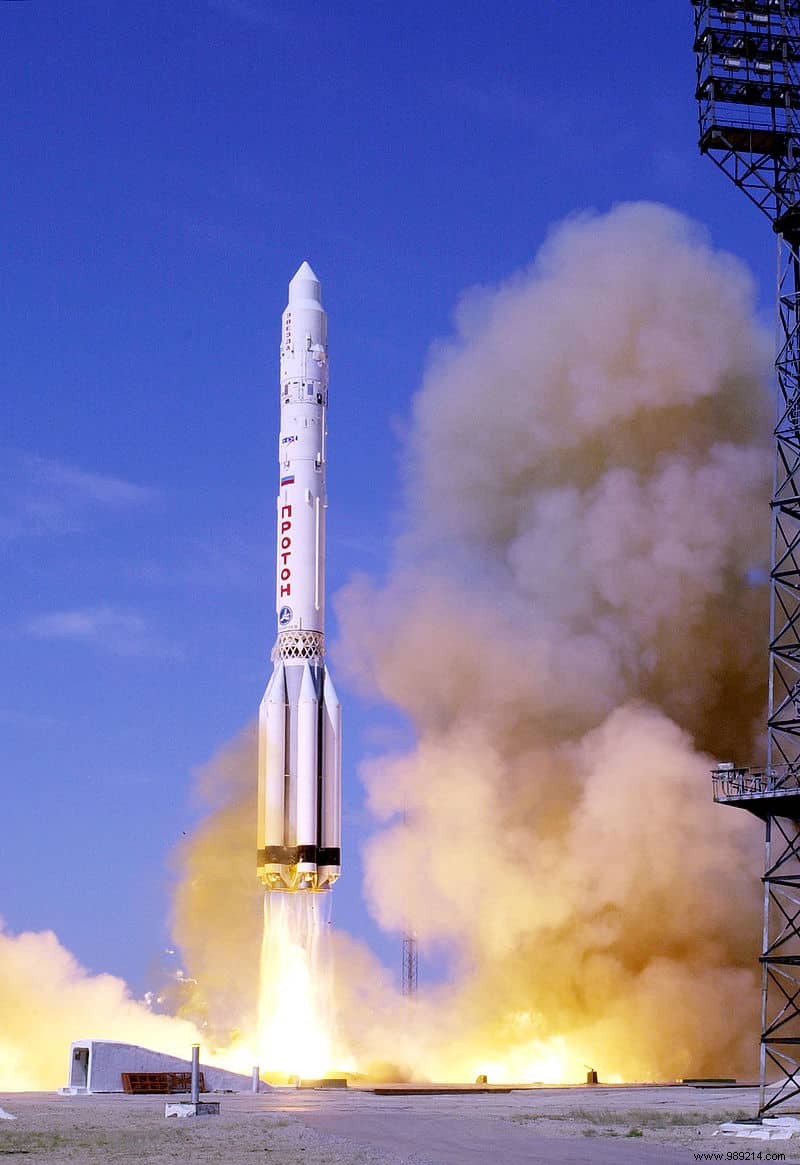Roscosmos, the Russian space agency, is in the process of developing its last four Proton rockets before stopping production of this venerable, aging and very polluting launcher. These last rockets will then leave instead to the Angara launchers.
The Proton rocket is the main Russian heavy launcher. Developed in the early 1960s, it made its first flight in 1965 , in the middle of the space race between the Soviet Union and the United States. Since then, more than 420 of these launchers were lifted into space from the Baikonur launch pad with a failure rate of about 10% , some of which were highly publicized. It was also aboard one of these rockets that Thomas Pesquet flew to the ISS in 2016, before flying with SpaceX in 2021.
These days, Proton rockets have the disadvantage of using propellants that are too toxic according to the standards now in force. These launchers, with a lifting capacity of 23.7 metric tons into low Earth orbit, have also faced increasing competition for commercial launches. One thinks in particular of the Falcon 9 from SpaceX, capable of providing much cheaper flights while offering lower insurance premiums. As a result, while more than a dozen such rockets were previously launched each year in Russia, the flight rate has fallen to a maximum of three missions per year since 2015 .
In this sense, its manufacturer, GKNPZ Khrunichev, is currently developing a new family of launchers called Angara, responsible for restoring the Russian image. Everything will depend on the country's ability to reduce the production costs of its next workhorse, the Angara-A5, from $100 million per launch to $57 million by 2024, as originally planned. Meanwhile, SpaceX will continue to fly its Falcon 9 booster for less than thirty million dollars per launch.

In a press release, Roscosmos announced the assembly of the last four Proton launchers at the plant of the National Center for Space Research and Design in Khrunichev, in the Fili district in Moscow. Once their production is complete, these four rockets will be added to the other ten Proton-M rockets ready to fly.
Russia plans to launch these final fourteen Proton rockets in the next four or five years . Meanwhile, several payloads, such as military communications satellites, will be gradually launched by the new Angara-A5 rocket, which was successfully launched in 2014, 2020 and 2021 in test flights.